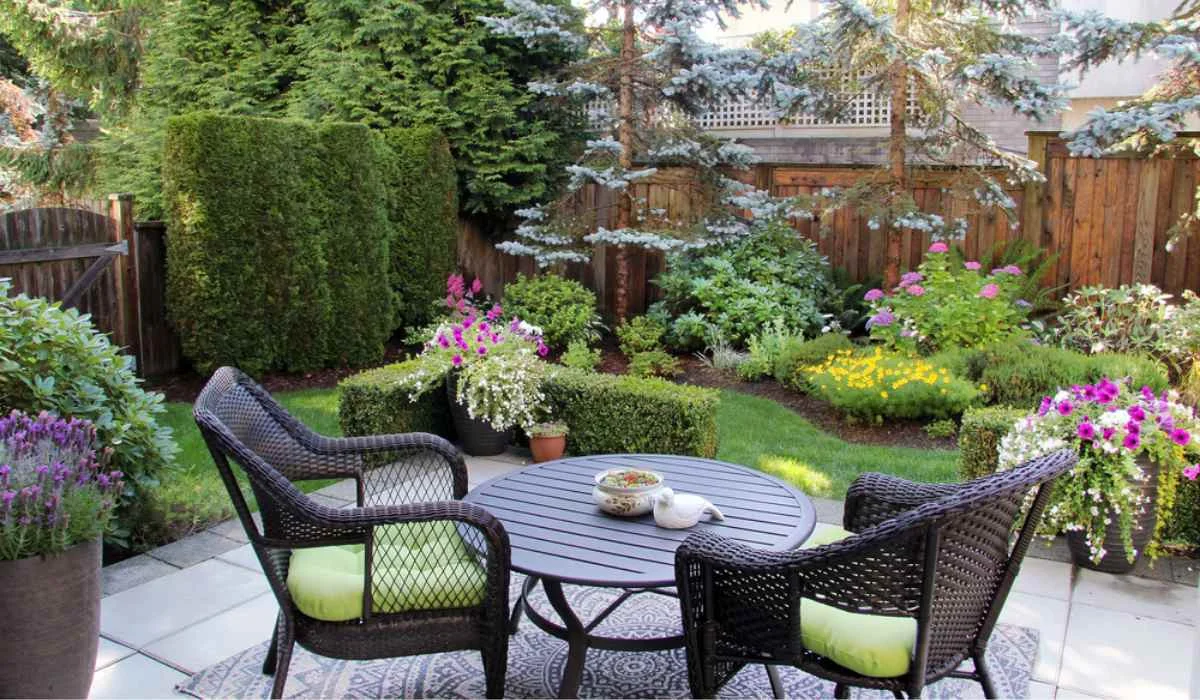Many gardeners enjoy gardening but lack the time or dedication for high maintenance landscapes. Replacing lawns with drought-tolerant plants, cutting water usage and opting for rock garden or alpine plantings are ways you can drastically decrease gardening work required in your garden.
Opt for perennial plants that will come back year after year and avoid any that spread quickly or aggressively. Group plants with similar watering needs into groups for easy maintenance and consider xeriscaping as a way to conserve resources.
Choose Low-Maintenance Plants
Low-maintenance landscaping depends on plants that require little input from gardeners, like easy-care varieties that adapt well to different soil types, light conditions and climate zones; plus those which need minimal pruning, grooming, deadheading or staking needs.
Bright blue perennial Heucheras can withstand summer’s heat and humidity while their vibrant pink flowers attract butterflies and bees. Evergreen shrubs like Bergenia require minimal pruning while providing year-round color in your garden. Planting a rock garden or alpine bed featuring drought-tolerant plants is another effective way of cutting back on water usage and maintenance costs in your landscape.
Substituting hardscape elements and low maintenance ground cover like gravel or pavers with permeable mulches like gravel can also help reduce weeding while conserving water resources.
Avoid High-Maintenance Features
Garden maintenance may never be completely low-maintenance; however, many gardeners can minimize the work needed by switching out lawn for paving or gravel and replacing herbaceous perennials in borders with shrubs for reduced work requirements.
Evergreen climbers like Trachelospermum jasminoides are an easy and cost-effective way to add interest and texture to any boundary fence or plain wall without much effort required on your part. Opting for plants well adapted to local climate and soil conditions will further minimize maintenance needs.
Cover any bare ground in your small garden with mulch for a tidy appearance and to retain moisture and reduce weeding. Or try water-wise gardening by employing native and drought-tolerant plants to xeriscaping – particularly important this year with water restrictions in effect!
Add Hardscape Elements
Hardscape elements can reduce the work required for gardening. Stone walkways instead of grass paths will help minimize dirt tracked through flower gardens and garden beds, and an attractive water feature like a birdbath or small pond may attract birds that help with pest control and pollination.
Select plants native to your area as they’ll better adapt to its climate and soil conditions, saving money on water bills while eliminating the need for fertilizer applications and decreasing maintenance requirements. Native shrubs such as dwarf globe spruce, upright juniper and Japanese barberry require minimal pruning for best results, giving year-round interest.
Low maintenance gardens don’t need to be dull and lifeless spaces; by decreasing time spent performing chores like mowing lawns, trimming topiary sculptures and tending overly fussy roses you can make your space much more pleasurable to spend time in.
Add Seating Areas
No matter if it’s just a small space or you are starting from scratch with an entire garden, it is crucial that you consider how you will use your space. Consider who will use the area at different points throughout the day – read the paper over coffee in the morning; an alfresco dining space; or somewhere to unwind after work by enjoying an after work drink with a drink in hand.
Add seating areas to reduce garden maintenance tasks and keep furniture easy to keep clean while also withstanding weather elements. Consider benches, pergolas or arbours as outdoor living room elements to create an outdoor living room feel cosy and welcoming. Being open-minded about wildness and imperfections can also reduce tasks: cracks in rough paving surfaces may become home for low-growing plants that will fill out gaps without ruining its look as much as they would on formal lawns with formal topiary sculptures.


